Related Research Articles

Andy Warhol was an American visual artist, film director, producer, and leading figure in the pop art movement. His works explore the relationship between artistic expression, advertising, and celebrity culture that flourished by the 1960s, and span a variety of media, including painting, silkscreening, photography, film, and sculpture. Some of his best-known works include the silkscreen paintings Campbell's Soup Cans (1962) and Marilyn Diptych (1962), the experimental films Empire (1964) and Chelsea Girls (1966), and the multimedia events known as the Exploding Plastic Inevitable (1966–67).

George Kuchar was an American underground film director and video artist, known for his "low-fi" aesthetic.
An underground film is a film that is out of the mainstream either in its style, genre or financing.

The Factory was Andy Warhol's studio in New York City, which had four locations between 1963 and 1987. The Factory became famed for its parties in the 1960s. It was the hip hangout spot for artists, musicians, celebrities and Warhol's superstars. The original Factory was often referred to as the Silver Factory. In the studio, Warhol's workers would make silkscreens and lithographs under his direction.

Gerard Joseph Malanga is an American poet, photographer, filmmaker, actor, curator and archivist.

Empire is a 1965 American black-and-white silent art film by Andy Warhol. When projected according to Warhol's specifications, it consists of eight hours and five minutes of slow motion footage of an unchanging view of New York City's Empire State Building. The film does not have conventional narrative or characters, and largely reduces the experience of cinema to the passing of time. Warhol stated that the purpose of the film was "to see time go by."
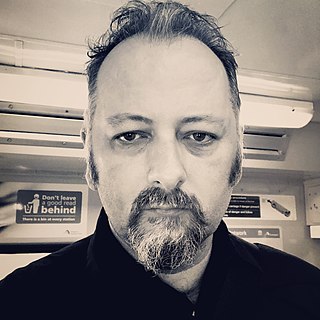
Jack Sargeant is a British writer specializing in cult film, underground film, and independent film, as well as subcultures, true crime, and other aspects of the unusual. In addition he is a film programmer, curator, academic and photographer. He has appeared in underground films and performances. He currently lives in Australia.
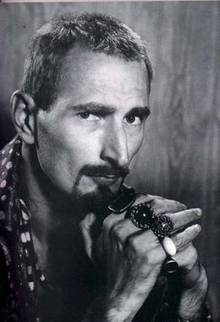
Jack Smith was an American filmmaker, actor, and pioneer of underground cinema. He is generally acclaimed as a founding father of American performance art, and has been critically recognized as a master photographer.

Chelsea Girls is a 1966 American experimental underground film directed by Andy Warhol and Paul Morrissey. The film was Warhol's first major commercial success after a long line of avant-garde art films. It was shot at the Hotel Chelsea and other locations in New York City, and follows the lives of several of the young women living there, and stars many of Warhol's superstars. The film is presented in a split screen, accompanied by alternating soundtracks attached to each scene and an alternation between black-and-white and color photography. The original cut runs at just over three hours long.

Canyon Cinema is an American nonprofit organization for distributing independent, avant-garde, and artist-made films. After starting in the 1960s as an exhibition program, it grew to include a nationwide newsletter and a distribution cooperative. Its exhibition activities were split off to form the San Francisco Cinematheque.
The Flicker is a 1966 American experimental film by Tony Conrad. The film consists of only 5 different frames: a warning frame, two title frames, a black frame, and a white frame. It changes the rate at which it switches between black and white frames to produce stroboscopic effects.
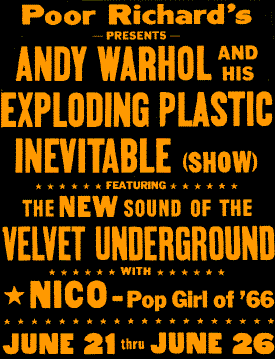
The Exploding Plastic Inevitable Now, sometimes simply called Plastic Inevitable or EPI, was a series of multimedia events organized by Andy Warhol in 1966 and 1967, featuring musical performances by The Velvet Underground and Nico, screenings of Warhol's films, and dancing and performances by regulars of Warhol's Factory, especially Mary Woronov and Gerard Malanga. Andy Warhol's Exploding Plastic Inevitable is also the title of an 18-minute film by Ronald Nameth with recordings from one week of performances of the shows which were filmed in Chicago, Illinois, in 1966. In December 1966 Warhol included a one-off magazine called The Plastic Exploding Inevitable as part of the Aspen No. 3 package.
Robert Carlton Breer was an American experimental filmmaker, painter, and sculptor.
Beverly Grant was an actress and filmmaker who appeared in films by Andy Warhol, Jack Smith, Gregory Markopoulos, Ira Cohen, Ron Rice, and Stephen Dwoskin, on the off-off Broadway stage in works by Ronald Tavel and LeRoi Jones, as well as collaborated with her one-time husband, experimental filmmaker and musician, Tony Conrad. Smith, the avant-garde filmmaker of Flaming Creatures and Normal Love, in which Grant appeared, called her "the queen of the underground – both undergrounds."
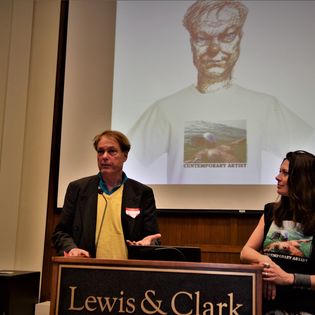
The Oregon Cartoon Institute is located in Portland, Oregon. It was founded in 2007 by Anne Elizabeth Richardson, dedicated to raising awareness of Oregon's rich animation and cartooning history. The OCI has produced projects on Mel Blanc, Harry Smith, Robert Crumb, James Ivory, Pinto Colvig, Lew C. Cook, James Blue, Joan Gratz, Homer Groening, and others. Anne Richardson died on October 14, 2020. The current board is chaired by Katherine Richardson. Members of the board are Laura Berg, Sebastian Heiduschke, Kira Lesley and Ellen Thomas.
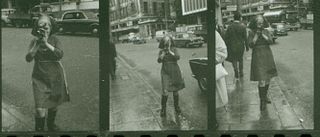
Barbara Rubin (1945–1980) was an American filmmaker and performance artist. She is best known for her landmark 1963 underground film Christmas on Earth.
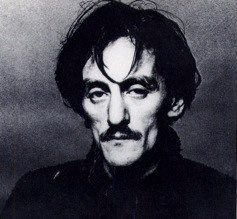
Jerry Jofen (1925–1993) was an American painter, collagist, and experimental filmmaker.

Piero Heliczer was an Italian-American poet, publisher, actor and filmmaker associated with the New American Cinema.

Edward Owens (1949–2010) was a queer African-American filmmaker, active within the New American Cinema of the 1960s. A native Chicagoan, he is best known for his experimental films Remembrance: A Portrait Study (1967) and Private Imaginings and Narrative Facts (1968–70).
Sheldon Renan is a writer. His first book, An Introduction To The American Underground Film, was published in America by Dutton in 1967. In England it was printed by Studio Vista (1968) as "The Underground film. An introduction to its development in America." It was the first book about underground film. He is a graduate of Yale University and a Rockefeller Grant recipient.
References
- ↑ An Introduction to the American Underground Film, Sheldon Renan, Publisher: Dutton; 1st edition (1967) Language: English ISBN 978-0525472070, ASIN B0006BSXOI
- ↑ "An Introduction To The American Underground Film". www.goodreads.com.
- ↑ "An introduction to the american Underground Film by Sheldon Renan". Issuu.
- ↑ An introduction to the American underground film . Retrieved June 9, 2019– via www.amazon.com.
- ↑ "An Introduction to the American Underground Film by Sheldon Renan: Dutton 9780525472070 Soft cover, 1st Edition - 3rd Man Books". www.abebooks.com.
- ↑ "Underground Film Is Oregon Territory: Sheldon Renan Wrote The Book - Oregon Movies, A to Z".
- ↑ E.c (1 December 1967). "Review: AN INTRODUCTION TO THE AMERICAN UNDERGROUND FILM by Sheldon Renan". Film Quarterly. 21 (2): 59. doi:10.2307/25700417. JSTOR 25700417 – via fq.ucpress.edu.
- ↑ "An Introduction To The American Underground Film". Underground Film Journal. 4 July 2007.
- ↑ Renan, Sheldon (5 June 1967). An introduction to the American underground film. New York : E.P. Dutton & Co. ISBN 9780525472070 – via Internet Archive.
- ↑ "Experimental film - Monoskop". monoskop.org.
- ↑ www.amazon.com https://www.amazon.com/introduction-American-underground-film/dp/B0006BSXOI . Retrieved June 9, 2019.
{{cite web}}: Missing or empty|title=(help)